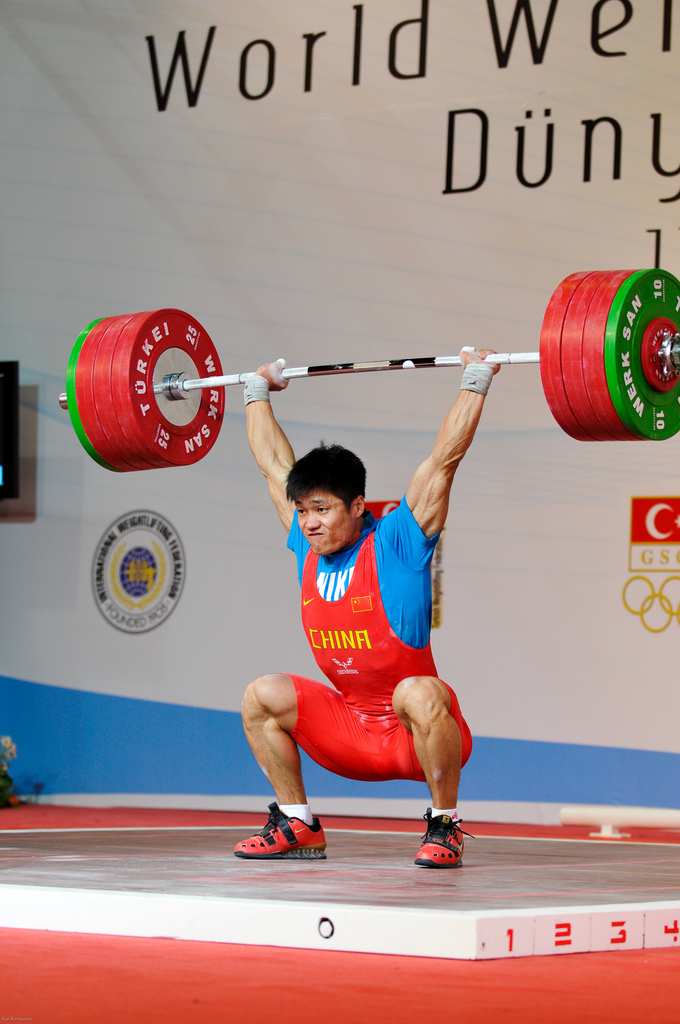mobility series part iii: allow your body to move.
In this part of the series, we look at how our body functions and how mobility is important to help us function.
Mobility can also be referred to as how our joints and muscles are moving when we go through our daily activities. Each joint has a certain range of motion and different planes of movement (i.e. flexion, extension, rotation etc.). However, how extensive this range is for each joint, depends on several factors.
 the squat jerk requires flexibility and mobility in every joint of the body to be executed correctly and safely.
the squat jerk requires flexibility and mobility in every joint of the body to be executed correctly and safely.
Firstly, the bone structure itself. Each individual has a different bone structure and this skeletal characteristic differentiates each of our own abilities from someone else's. For example, my hip socket might be bigger than someone else's which then allows me to get more flexion in my hips and gives me a deeper squat compared to someone who has a small hip socket, limiting how much the femur (thigh bone) can move within the hip. Think of it as a mortar and pestle. The larger the mortar, the more free the pestle can move about in it. Thus, bone structure is then a limiting factor in our joints which cannot be altered unless you go through extensive surgery.
Secondly, apart from bone structure, controllable factors of mobility begin with the soft tissue structures of our joints. We begin with the ligaments. These are the "bands" that hold our joints in place and allow us to move about without worrying about bones sliding off each other. If they are loose, we lose the integrity of our joints which could let to many dislocations and end up rupturing one of the ligaments. But on the contrary, if they are too tight, they restrict our range of motion, limiting our flexibility and ability to get into a good position for certain movements.
Lastly, the most superficial layer that would affect joint mobility would be our muscles. Like the ligaments, their purpose is not only to hold the joints in place but also create movement. Contracting the muscles allow body segments (i.e. thigh, forearm, shank etc.) to move in space. However, the length at which your muscles move determine your range of motion of that joint. For example, if you want to bring your forearm up (flexing your arm), but the back of your upper arm is tight (tight triceps), you can't bring it up too high because the back of your arm is limiting your range of motion.
So how do you correct this?
1. Firstly, you will have to assess where is your point of weakness. Is there a movement you are doing that is causing you to have limited range of motion (i.e. sitting down all day hence locking up your hips)? Is there a physical limitation that you have that limits you from getting a full range of motion (i.e. shorter thigh/shank lengths affecting your squatting position)?
2. Secondly, based on your assessment, determine the areas that require work. Work on making your joints more mobile, your muscles looser. Do lots of stretching and mobilisation. Use everyday items (i.e. tennis balls, rolling pins) and be your own massage therapist by massaging the areas that need to be worked on to break down scar tissue which usually is what causes soreness or tightness.
3. While you need to do stretching and massage to loosen up the joints/muscles, you also need to strengthen them up to ensure that they are strong enough to handle the workload you put them through. By having stronger muscles which are able to work at better ranges of motion, you provide more support for the joint which reduces the risk of injury.
Thus, to conclude, mobility in our body, though limited by our physical structure, is within our own control. As our body segments are all connected, a deficiency in the movement of one of them could result in dysfunction in the others. Therefore, if you want to be more efficient in your daily movements and reduce your chances of getting injury, remember to work on increasing joint mobility and range of motion in order to maintain optimal function.
Stay Strong and Keep Moving,
The Training Geek.
